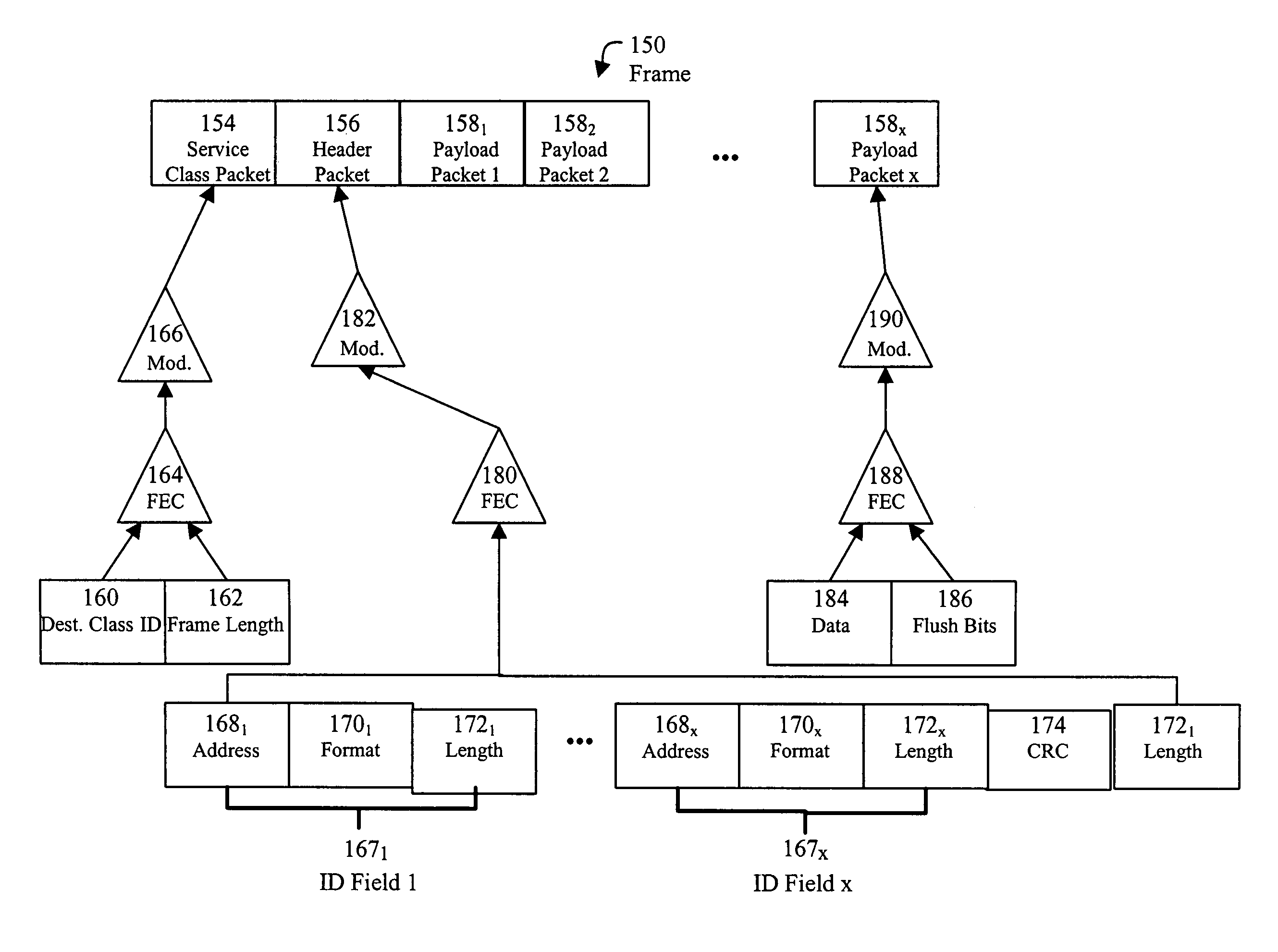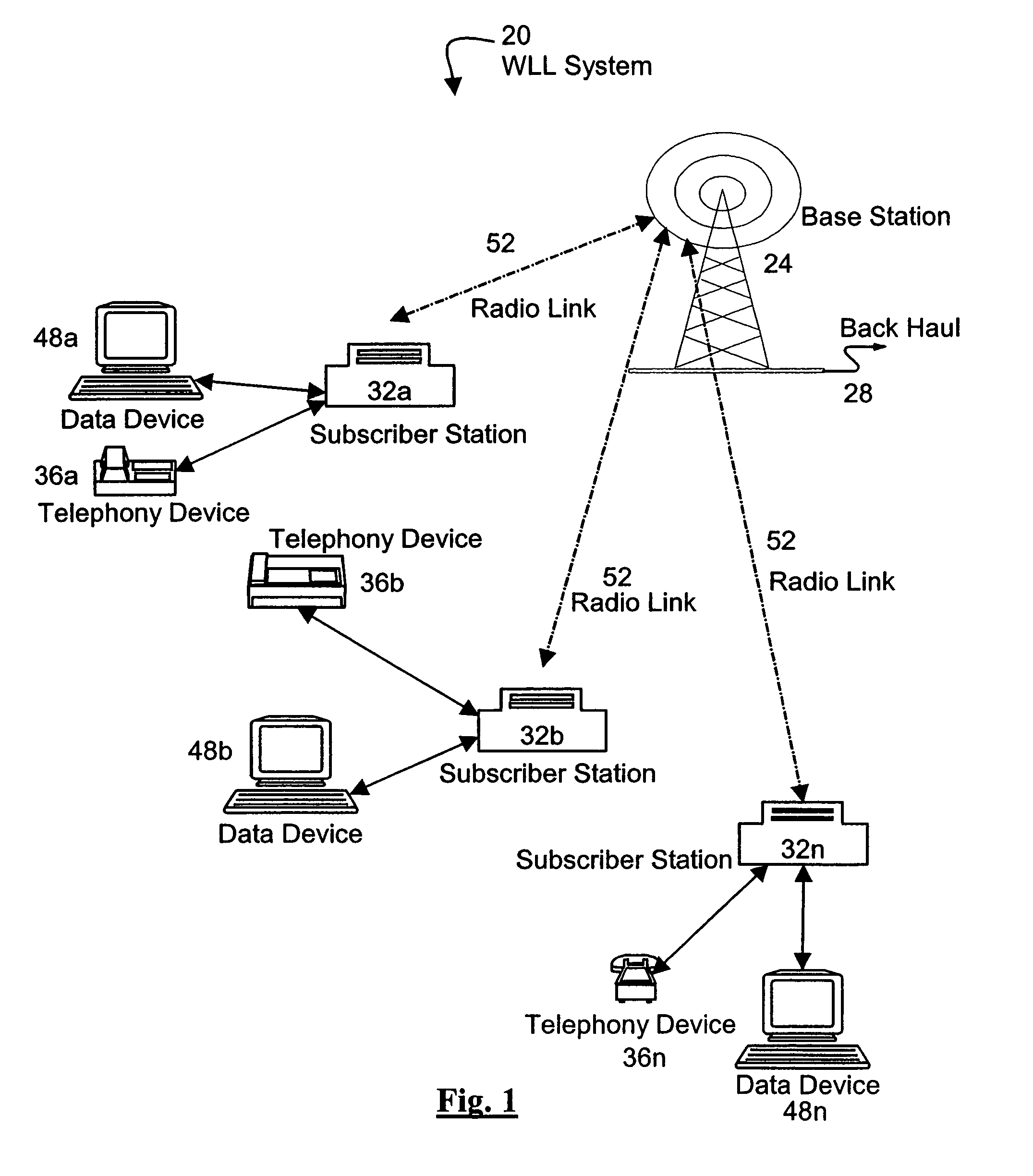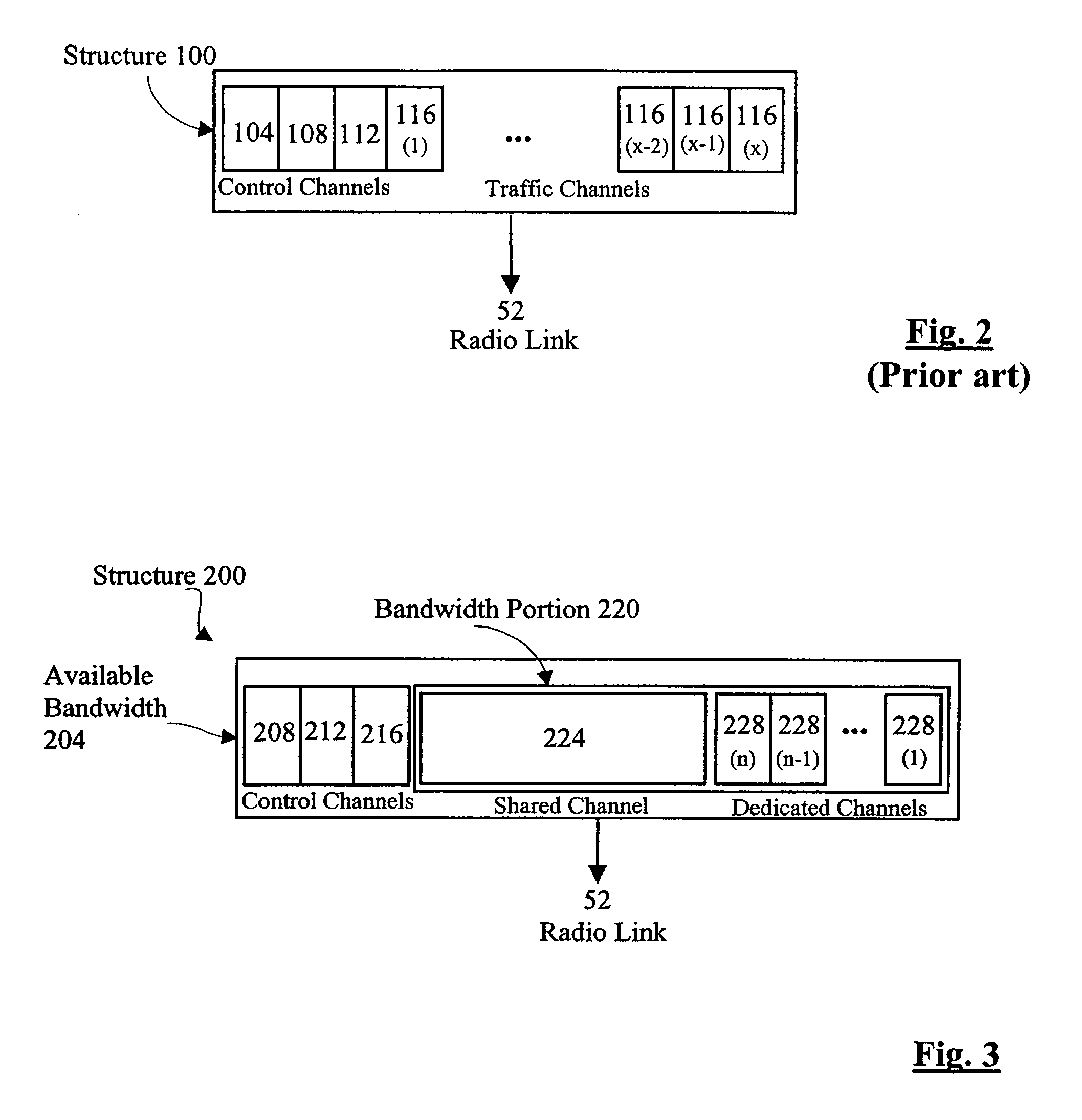Communication structure with channels configured responsive to reception quality
a communication structure and channel technology, applied in the field of communication structure and method, can solve the problems of difficult and/or costly creation of a communication system, significant amount of time and overhead, and achieve the effect of efficient us
- Summary
- Abstract
- Description
- Claims
- Application Information
AI Technical Summary
Benefits of technology
Problems solved by technology
Method used
Image
Examples
Embodiment Construction
[0071]FIG. 1 shows a wireless local loop (WLL) system, indicated generally at 20. System 20 includes at least one network node, such as base station 24, which is connected to one or more networks, such as the PSTN and / or the Internet, and / or to one or more other base stations 24, via a back haul 28. Each base station 24 communicates with a plurality of subscriber stations 32 via a multiplexed radio link 52 shared between subscriber stations 32. In FIG. 1, each subscriber station 32 can provide simultaneous connections to at least one telephony device 36, such as a telephone set or facsimile machine, and a data device 48 such as a computer, video conferencing system, etc.
[0072]Radio link 52 employs a suitable multiplexing technique, such as TDMA, FDMA, CDMA, hybrids thereof or other multiplexing techniques to allow simultaneous use of radio link 52 by more than one subscriber station 32 and / or base station 24.
[0073]In prior art systems where, for example, subscriber stations are mobi...
PUM
 Login to View More
Login to View More Abstract
Description
Claims
Application Information
 Login to View More
Login to View More - R&D
- Intellectual Property
- Life Sciences
- Materials
- Tech Scout
- Unparalleled Data Quality
- Higher Quality Content
- 60% Fewer Hallucinations
Browse by: Latest US Patents, China's latest patents, Technical Efficacy Thesaurus, Application Domain, Technology Topic, Popular Technical Reports.
© 2025 PatSnap. All rights reserved.Legal|Privacy policy|Modern Slavery Act Transparency Statement|Sitemap|About US| Contact US: help@patsnap.com



